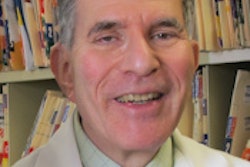
SAN FRANCISCO - Is the ride-sharing service Uber a viable model for radiology to emulate as it seeks ways to evolve with the changing healthcare environment? What exactly is patient-centered radiology -- and why is it important? How should radiologists participate in redesigning how healthcare is provided?
Presenters at the annual International Symposium on Multidetector-Row CT (MDCT) addressed these questions in a lively June 9 session that explored a wide range of practice management topics. Undergirding it all was the theme of the radiologist as a key provider of information across the healthcare continuum.
"The future of radiology is radiologists acting as 'information doctors,' and our value will be in collecting and communicating that information," said session moderator Dr. Geoffrey Rubin from Duke University.
The 'Uberization' of imaging
The on-demand ride-sharing service Uber was established in 2009 and is currently valued at $40 billion. The Uber structure gives customers a number of benefits, including ease in finding a provider for a particular task and an estimate of the service's cost before it is delivered. Uber has sparked a business model that could be applied to radiology, Rubin said in his presentation.
Uber's service providers benefit, too: Because tasks are assigned on demand, work flexibility is built in. In fact, this type of structure is already being used in healthcare, he said. For example, a company called HealthTap gives patients access to a roster of 69,000 physicians for consultations.
Doctor-patient contact in the cloud allows for one-on-one encounters, and this could be an effective way to use the Uber model in imaging, according to Rubin. Typically, a referring physician prescribes a CT exam, orders it, and directs the patient to contact the imaging department to schedule it. The scan is performed and sent to a group of radiologists, one of whom will interpret it and give the results to the referring physician, who will then discuss them with the patient. But perhaps this sequence could be improved.
"In the context of the cloud, we could imagine a reorganization of everybody," Rubin said. "One radiologist could be focused on communicating with patients what the test is, why it's appropriate, and answering questions. Another could be present at the point of care, making sure we have a safe and high-quality exam. And a third could be speaking with the referring physician, giving results and contextualizing those results. It would be a 'disaggregation' of radiologists' work -- they'd be doing specific tasks."
There are some real benefits to "Uberization," such as making it easier for radiologists to engage directly with patients. But there are also drawbacks, such as a lack of control over workflow, more supply than demand, and the risk of exam prices and quality being reduced to the lowest common denominator, according to Rubin.
And before an Uber model could be used for CT -- or radiology in general -- providers would have to resolve issues such as how to establish the value and cost of services, whether there would be enough demand for live consults over written reports, how licensing and clinical privileges would be handled, and how prior clinical and imaging information could be incorporated, Rubin said.
"The role for radiology isn't at all defined at this point within this type of business model," he said. "But the strong transactional nature of image interpretation makes it a strong candidate for Uberization."
Practicing patient-centered care
In another MDCT 2015 presentation, Dr. Judy Yee of the University of California, San Francisco (UCSF) discussed how the practice of patient-centered radiology is increasing, bolstered in part by initiatives including Radiology Cares from RSNA and Imaging 3.0 from the American College of Radiology (ACR). But what exactly are these programs?
"The basic tenets of patient-centered radiology are improved communication between radiologists and referring physicians, as well as patients," she said. "Standardized reporting helps with this, as do patient portals. But we also want to improve the level of care patients receive in radiology and promote the radiologist's role in the quality of patients' healthcare."
Why is it important? For a variety of reasons, Yee said, including the need for radiologists to become more visible, competition from other specialties, and maintenance of certification requirements such as interpersonal and communication skills and professionalism. But the main reason is simpler.
"It's what patients and payors want," she said.
Yee outlined a number of ways radiologists can make their practice more patient-centered:
- Make appointment scheduling easy.
- Have a warm reception area and friendly receptionists.
- Explain exam results clearly, offering face time with interpreting radiologists.
- Provide quick report turnaround.
- Offer cost flexibility and transparent pricing and billing.
For further support and ideas, Yee encouraged session attendees to investigate Radiology Cares and Imaging 3.0 resources.
'Docking in' to healthcare redesign
The delivery of healthcare is changing, and there are six main drivers, Dr. Giles Boland of Massachusetts General Hospital told session attendees:
- The Affordable Care Act and insurance reform: focusing on providing value, improving outcomes, and managing costs
- Personalized medicine: increasingly treating patients based on their genomic profiles
- Collaborative medicine: physicians working as teams with patients -- if patients are engaged in their care, they have better outcomes
- Branding and new markets: collaboration between small practices and academic centers
- IT innovation: IT as the glue for everything, from quality and safety to outcomes measurement
- Alignment: having clinical teams, hospitals, insurers, and community centers aligned to deliver change
"It's a very new world out there, and we've only just begun to understand what it's really like," Boland said. "But we need to be informed so that we can be part of the conversation as payments get divvied up into different specialties."
To survive, radiologists need to adapt to new payment models. Boland described a tiered model of assessing healthcare delivery put forth by Michael Porter in the Harvard Business Review (October 2013). Tier 1 refers to achieving or retaining a patient's health status, tier 2 is the process of recovery, and tier 3 is the sustainability of health.
"Each of those tiers has measures and outcomes for which we can be paid," Boland said. "But we're going to be delivering care as part of integrated practice units, multidisciplinary teams. This isn't radiology in one part of the hospital, pathology in another, gastroenterology in another -- we will have condition-based teams that will be responsible for the care of particular patients."
How will radiologists be able to "dock in" to this process? One way is to change what is measured, according to Boland.
"What we measure now has almost no meaning to patients and very little relationship to outcomes," he said. "Volume, [relative value units], productivity, backlog -- none of these address quality and safety, and those measures are how we're going to get paid. So we have to start asking ourselves questions like, 'Did the referring physician find the information useful? Did the results in imaging change the diagnosis or therapy? Did the use of imaging eliminate the need for more expensive or invasive procedures?' "
When radiologists can answer these types of questions, they'll have more influence on payment reform and will be able to advocate successfully for the value of radiology in healthcare.
"We have to fundamentally rethink the questions we're asking and what we're measuring," Boland concluded.





















